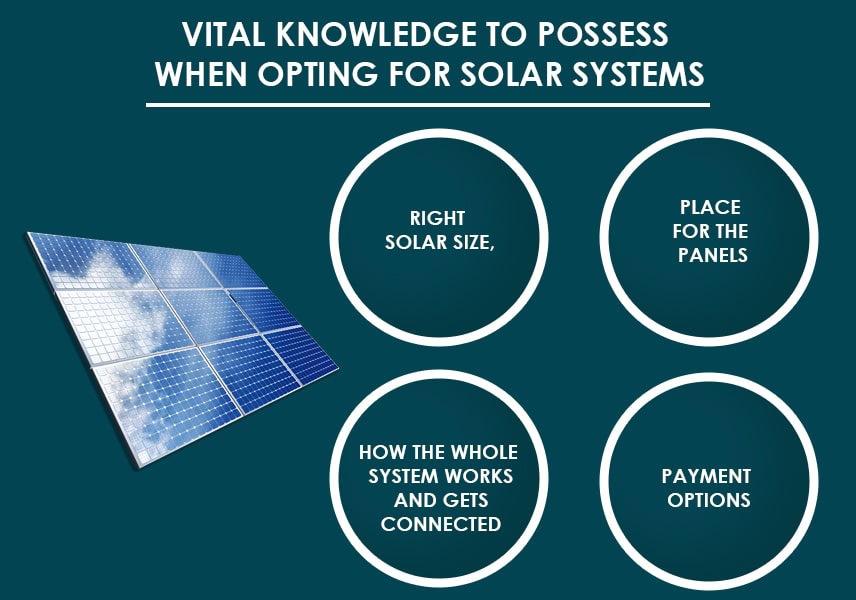Is solar power installation on your mind? Here’s a rundown of requirements and some useful pre-knowledge for you.
Solar power installations in Australia are seeing all-time high figures and are expected to grow. When a lot is happening around, why not be a part of the change? In our previous release, we saw how Australian homes are turning solar in record numbers.
Now that you’re ready to go solar, we have listed a couple of requirements and a few tips you could use to make a smooth green transition.
What solar size would I go for?
This is a fundamental requirement. You should have some information about your energy (electric energy) consumption to pass on to the solar company. Your energy requirements are calculated from the electricity bills. How much energy you need every year is derived in kilowatts. Additionally, it’s better to assume the future energy load you would require, such as a pool, new A/Cs, an electric car, and so on.
Once all these areas are addressed, you will be able to size the solar system for your house. Solar companies typically require full yearly energy usage to quote a full offset. So the solar size you would get will be based on how much power you use per year, a full offset.
Where to install the system?
The second requirement is ‘space’. You’ve got the size of your solar system, now see to it whether it can get accommodated on the roof, some area in the backyard, or if you could use the garage.
The main thing to pay attention to is to check whether the selected space could harvest a full open source of sun rays.
If your solar system is quite large for the roof, you can opt for a combined installation type. You can make use of some roof area and backyard space.
How does the solar system get connected?
It’s good if the connecting mechanism is taken into account while deciding the location of solar panels. All solar arrays have to be electrically connected to the electric service panel to deliver their power. Be it a roof-mount solar system or ground mount, there has to be a path directed towards the panel.
When the solar system’s location is decided, the connecting path should also be worked out. The connecting path carries an electric conduit (the pipe containing the electric wiring), which runs between the solar panels and the main electric panel.
If done beforehand, it won’t add any extra cost and time to the project.
For instance, for roof-mounted solar, an ideal position of the electric conduit running between the panels and the main electric panel would be through the attic and then down from the sides of the home.
Our installers will work patiently to find out the best running passage for the electric conduit. A professionally done installation will not only go for hidden locations for electric conduit but also make sure that your home appeal remains sound at the time of resale.
What about the roof?
If you are going to have your solar system on the roof, then it needs to be in good condition to support the system efficiently. Solar equipment weighs about 3 lbs. sq. ft, which is quite light, so there won’t be any downward pressure. On the contrary, because solar panels are thin and flat, the wind pressure tends to pull upward on the roof. Panels are delicate, so it’s vital to have the structure properly anchored into the roof truss beams.
If you see signs of your roof wearing out, it’s advisable to get the roof inspected by a roofing professional before mounting solar panels on it. At Vista, we can assist you in finding a roofing contractor to conduct a survey.
What are the ways to pay for the solar system?
A solar system is like any other home investment. Some buyers may be able to pay
- in cash
- Some by securing loans or
- Some by leasing the system for 15-20 years.
Every buyer would have different financial situations and needs. Some homeowners may want to and be able to pay upfront in a single transaction, while others will try to find other options.
If you are thinking of securing a loan, then the government has loan schemes to promote solar system installation in Australia.
This way or the other way, your solar dream comes true.
Conclusion:
It’s a wise decision to go solar, and we applaud you. The above listed are the primary requirements that you should consider while finalizing your solar system.
At Vista Electrical Controls, we run these checks for our clients and see to it that they have an uncomplicated, seamless, and optimum-yielding solar experience. Our in-house skilled professionals will assist you thoroughly with every question you have about your decision and suggest the most suitable solution for you.
If you have solar on your mind, get in touch with us today.
Go solar and start saving today! A step towards environment conservation.

